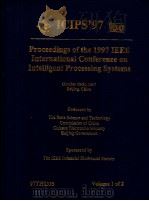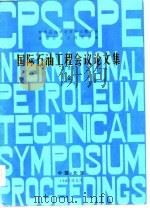《国际人工智能会议论文集 IJCAI85 (VOLUME1、2)》
| 作者 | 编者 |
|---|---|
| 出版 | 未查询到或未知 |
| 参考页数 | 1311 |
| 出版时间 | 没有确切时间的资料 目录预览 |
| ISBN号 | 无 — 求助条款 |
| PDF编号 | 811278248(仅供预览,未存储实际文件) |
| 求助格式 | 扫描PDF(若分多册发行,每次仅能受理1册) |

VOLUME 11
AI AND EDUCATION1
Al and Education 11
The Geometry TutorJohn R.Anderson,C.Franklin Boyle,and Gregg Yost1
Dynamic Student Modelling in an Intelligent Tutor for8
LISP ProgrammingBrian J.Reiser,John R.Anderson,and Robert G.Farrell8
Heuristic and Formal Methods in Automatic Program DebuggingWilliam R.Murray15
Grammars as User ModelsEthel Schuster20
An Expert System for Understanding Expressions from Electric Circuit AnalysisRostam Joobbani and Sarosh N.Talukdar23
Computer Assisted Reasoning with MIZARAndrzej Trybulec and Howard Blair26
AI ARCHITECTURES29
AI Architectures 129
The Intelligent Channel: A Scheme for Result Sharing in Logic ProgramsSimon Kasif and Jack Minker29
The Architecture of the FAIM-1 Symbolic Multiprocessing SystemA.L.Davis and S.V Robison32
A Variable Supply Model for Distributing DeductionsVineet Singh and Michael R.Genesereth39
A Modular Tool Kit for Knowledge ManagementGilles M.E.Lafue and Reid G.Smith46
AI Architectures 253
Parallelism in Al ProgramsDennis F Kibler and John Conery53
Recognition Algorithms for the Connection MachineAnita M.Flynn and John G.Harris57
NON-VON’s Applicability to Three Al Task AreasDavid Elliot Shaw61
Yes,An SIMD Machine Can Be Used for AIRuven Brooks and Rosalyn Lum73
AUTOMATED REASONING80
Automated Reasoning 180
CounterfactualsMatthew L.Ginsberg80
Reasoned Assumptions and Pareto OptimalityJon Doyle87
Deals Among Rational AgentsJeffrey S.Rosenschein and Michael R.Genesereth91
Automated Reasoning 2100
A Functional Approach to Non-Monotonic LogicErik Sandewall100
Does Probability Have a Place in Non-monotonic Reasoning?Matthew L.Ginsberg107
Combination and Propagation of Uncertainty with Belief Functions—A ReexaminationDidier Dubois and Henri Prade111
Results on Translating Defaults to CircumscriptionTomasz Imielinski114
Computing CircumscriptionVladimir Lifschitz121
Automated Reasoning 3128
The Limits of Qualitative SimulationBenjamin Kuipers128
Quaiitative Mathematical ReasoningElisha Sacks137
Combining Discrete and Continuous Process ModelsDaniel S.Weld140
On the Comparison of Theories: Preferring the Most Specific ExplanationDavid L.Poole144
Using Model Theory to Specify Al ProgramsAlan M.Frisch148
Automated Reasoning 4155
EGS: A Transformational Approach to Automatic Example GenerationMyung W.Kim155
Applying Adaptive Algorithms to Epistatic DomainsLawrence Davis162
Automating Program Speedup by Deciding What to CacheJack Mostow and Donald Cohen165
Evaluating Queries in Deductive Databases by GeneratingEliezerL.Lozinskii173
Automated Reasoning 5178
Modal Propositional Semantics for Reason Maintenance SystemsAllen L.Brown,Jr178
A Process Theory of Non-monotonic InferenceJames W.Goodwin185
An Approach to Dependency Directed Backtracking Using Domain Specific KnowledgeVasant Dhar188
Taxonomic ReasoningJosh D.Tenenberg191
Parallelism in Inheritance Hierarchies with ExceptionsGarrison W.Cottrell194
AUTOMATIC PROGRAMMING203
Automatic Programming 1203
Automated Enhancement of Knowledge RepresentationsRobert Balzer203
Synthesis by CompletionNachum Dershowitz208
Reasoning by Cases and the Formation of Conditional ProgramsDouglas R.Smith215
A Heuristic Approach to Program InversionDavid Eppstein219
The Origin of the Binary-Search ParadigmZohar Manna and Richard Waldinger222
Automatic Programming 2225
Symbolic Execution in Algorithm DesignDavid Steier and Elaine Kant225
Automatic Programming for StreamsDavid Barstow232
COGNITIVE MODELLING238
Cognitive Modelling 1238
Symbols Among the Neurons: Details of a Connectionist Inference ArchitectureDavid S.Touretzky and Geoffrey E.Hinton238
Virtual Lateral Inhibition in Parallel Activation Models of Associative MemoryJames A.Reggia244
The Teachable Letter RecognizerJames Geller249
Shape Recognition and Illusory ConjunctionsGeoffrey E.Hinton and Kevin J.Lang252
Computational Neurolinguistics—What Is It All About?Helen M.Gigley260
Cognitive Modelling 2267
Input-Expectation Discrepancy Reduction: A Ubiquitous MechanismDerek Partridge267
What’s in a Mental Model? On Conceptual Models in Reasoning with Spatial DescriptionsGoran Hagert274
Daydreaming in Humans and ComputersErik T Mueller and Michael G.Dyer278
A Short Note on Opportunistic Planning and Memory in ArgumentsLawrence Birnbaum281
A Process Model of Cased-Based Reasoning in Problem SolvingJanet L.Kolodner,Robert L.Simpson,Jr.,and Katia Sycara-Cyranski284
Learning to Understand Contractual SituationsSeth R.Goldman,Michael G.Dyer,and Margot Flowers291
Arguments of Persuasion in Labour MediationKatia Sycara-Cyranski294
EXPERT SYSTEMS297
Expert Systems 1297
Empirical and Model-based Reasoning in Expert SystemsP.A.Koton297
Control Issues in Classificatory DiagnosisJon Sticklen,B.Chandrasekaran,and John R.Josephson300
On Using Causal Knowledge to Recognize Vital Signals: Knowledge-based Interpretation of ArrhythmiasTetsutaro Shibahara307
Expert Systems 2315
Judgmental Reasoning for Expert SystemsTim Niblett315
Uncertainty Management in a Distributed Knowledge Based SystemNaseem A.Khan and Ramesh Jain318
Parallel Formulation of Evidential-Reasoning TheoriesTerence R.Thompson321
Predictor: An Alternative Approach to Uncertain Inference in Expert SystemsAllan P.White328
The Characteristic Error Approach to Conflict ResolutionRichard D.Ferrante331
Expert Systems 3335
An Architecture for Knowledge Based DeductionArthur J.Nevins335
Transactional BlackboardsJ.Robert Ensor and John D.Gabbe340
Representing Procedural Knowledge in Expert Systems: An Application to Process ControlMassimo Gallanti,Giovanni Guida,Luca Spampinato,and Alberto Stefanini345
COMODEL: A Language for the Representation of Technical KnowledgeWerner Dilger and Jorge Kippe353
Controlling Production Firing: The FCL LanguageLeonard Friedman359
Expert Systems 4367
SEEK2: A Generalized Approach to Automatic Knowledge Base RefinementAllen Ginsberg,Sholom Weiss,and Peter Politakis367
Checking an Expert Systems Knowledge Base for Consistency and CompletenessT.A.Nguyen,W.A.Perkins,T.J.Laffey,and D.Pecora375
Neat Explanation of Proof TreesAgneta Eriksson and Anna-Lena Johansson379
Explainable (and Maintainable) Expert SystemsRobert Neches,William R.Swartout,and Johanna Moore382
A Case Study in Structured Knowledge AcquisitionPaul de Greef and Joost Breuker390
Expert Systems 5393
RHINOS: A Consultation System for Diagnoses of Headache and Facial PainMichio Kimura,Yasushi Matsumura,Takashi Matsunaga,Ryuji Hata,and Hiroshi Matsumura393
Model Expert System MESGuan Jiwen,Xu Ying,Chang Minche,and Zhao Jizhi397
Knowledge Representation in an Expert Storm Forecasting SystemRenee Elio and Johannes de Haan400
Parsing Circuit Topology in a Deductive SystemTakushiTanaka407
An Expert Advisor for PhotolithographyTerry Cline,Wendy Fong,and Steven Rosenberg411
A Fault Detection and Isolation Method Applied to Liquid Oxygen Loading for the Space ShuttleEthan A.Scarl,John R.Jamieson,and Carl l.Delaune414
Expert Systems 6417
Syllogistic Reasoning as a Basis for Combination of Evidence in Expert SystemsL.A.Zadeh417
Flexible Data Fusion (and Fission)Alexander Yeh420
Fault Diagnosis Through ResponsibilityRobert Milne423
Control and Integration of Diverse Knowledge in a Diagnostic Expert SystemPamela K.Fink426
KNOWLEDGE REPRESENTATION432
Knowledge Representation 1432
GranularityJerry R.Hobbs432
Naive Kinematics: One Aspect of ShapeYoav Shoham436
A Representation for Complex Physical DomainsSanjaya Addanki and Ernest Davis443
ONYX: An Architecture for Planning in Uncertain EnvironmentsCurtis Langlotz,Lawrence Fagan,Samson Tu,447
John Williams,and Branimir Sikic447
Understanding Behavior Using ConsolidationTom Bylander and B.Chandrasekaran450
Knowledge Representation 2455
A Decidable First-Order Logic for Knowledge RepresentationPeter F.Patel-Schneider455
Two Results on Default LogicWitold Lukaszewicz459
On the Descriptional Complexity of Production SystemsPeter Trum462
Evidential Reasoning in Semantic Networks: A Formal TheoryLokendra Shastri and Jerome A.Feldman465
An Endorsement-based Plan Recognition ProgramMichael Sullivan and Paul R.Cohen475
Knowledge Representation 3480
A Guide to the Modal Logics of Knowledge and Belief:Preliminary DraftJoseph Y.Halpern and Yoram O.Moses480
Belief,Awareness,and Limited Reasoning:Preliminary ReportRonald Fagin and Joseph Y. Halpern491
A Computational Theory of Belief IntrospectionKurt Konolige502
A Model-Theoretic Analysis of Monotonic KnowledgeMoshe Y.Vardi509
Using Situation Descriptions and Russellian Attitudes for Representing Beliefs and WantsAlfred Kobsa513
Knowledge Representation 4516
A Procedural LogicMichael P Georgeff,Amy L.Lansky,and Pierre Bessiere516
Event CalculusGary C.Borchardt524
A Common-Sense Theory of TimeJames F Allen and Patrick J.Hayes528
An Essential Hybrid Reasoning System: Knowledge and Symbol Level Accounts of KRYPTONRonald J.Brachman,Victoria Pigman Gilbert,and Hector J.Levesque532
The Layered Architecture of a System for Reasoning about ProgramsCharles Rich540
The Restricted Language Architecture of a Hybrid Representation SystemMarc Vilain547
LEARNING AND ACQUISITION552
Learning and Acquisition 1552
Proportionality Graphs,Units Analysis,and Domain Constraints: Improving the Power and Efficiency of the Scientific Discovery ProcessBrian Falkenhainer552
A Comparison of Analytic and Experimental Goal Regression for Machine LearningBruce W.Porter and Dennis F Kibler555
Learning Disjunction of ConjunctionsL.G.Valiant560
Learning Hidden Causes from Empirical DataJudea Pearl567
Learning and Acquisition 2573
LEAP: A Learning Apprentice for VLSI DesignTom M.Mitchell,Sridhar Mahadevan,and Louis I.Steinberg573
MORE: An Intelligent Knowledge Acquisition ToolGary Kahn,Steve Nowlan,and John McDermott581
The Utility of Expert KnowledgeJonathan Schaeffer and T.A.Marsland585
Dynamic System Control Using Rule Learning and Genetic AlgorithmsDavid E.Goldberg588
Multi-Obiective Learning via Genetic AlgorithmsJ.David Schaffer and John J.Grefenstette593
Learning and Acquisition 3596
Selectively Generalizing Plans for Problem-SolvingSteve Minton596
Learning Planning Heuristics through ObservationCharles Dolan and Michael Dyer600
Heuristics for Inductive LearningSteven Salzberg603
Discovering the Wave Theory of Sound: Inductive Inference in the Context of Problem SolvingPaul Thagard and Keith Holyoak610
Validating Concepts from Automated Acquisition SystemsAlbrecht Heeffer613
Verification-based Learning: A Generalized Strategy for Inferring Problem-Reduction MethodsSridhar Mahadevan616
Learning and Acquisition 4624
Learning Procedures from Examples and by DoingDavid M.Neves624
Generating Rules from ExamplesBijan Arbab and Donald Michie631
Learning Concept Descriptions from Examples with ErrorsJukab Segen634
Knowledge Acquisition for Constructive SystemsSandra Marcus,John McDermott,and Tianran Wang637
Learning by Discovering Macros in Puzzle SolvingGlenn A.Iba640
Learning and Acquisition 5643
Generalizing Logic Circuit Designs by Analyzing Proofs of CorrectnessThomas Ellman643
Automatically Inferring Database SchemasSitaram Lanka647
Substantial Constructive Induction Using Layered Information Compression: Tractable Feature Formation in SearchLarry Rendell650
Learning Intermediate Concepts in Constructing a Hierarchical Knowldege BaseLi-Min Fu and Bruce G.Buchanan659
Learning about Momentum ConservationJude W.Shavlik667
Training and Tracking in RoboticsOliver G.Selfridge,Richard S.Sutton,and Andrew G.Barto670
Learning and Acquisition 6673
Representation and Use of Explicit Justifications for Knowledge Base RefinementsReid G.Smith,Howard A.Winston,Tom M.Mitchell,and Bruce G.Buchanan673
Learning Schemata for Natural Language ProcessingRaymond Mooney and Gerald DeJong681
Towards a Model of Conceptual Knowledge Acquisition Through Directed ExperimentationShankar Rajamoney,Gerald DeJong,and BoiFaltings688
Approaches to Conceptual ClusteringDouglas Fisher and Pat Langley691
A Prototypical Approach to Machine LearningR.I.Phelps and P.B.Musgrove698
VOLUME 2701
LOGIC PROGRAMMING701
Logic Programming 1701
Prolog-ELF Incorporating Fuzzy LogicMitsuru Ishizuka and Naoki Kanai701
Type Inference in Prolog and Its ApplicationTadashi Kanamori and Kenji Horiuchi704
Term Description: A Simple Powerful Extension to Prolog Data StructuresHideyuki Nakashima708
Interpreting Descriptions in a Prolog-based Knowledge Representation SystemRandy Goebel711
Retrospective Zooming: A Knowledge Based Tracking and Debugging Methodology for Logic ProgrammingMarc Eisenstadt717
Prolog Control RulesLee Naish720
Logic Programming 2723
A Logic Program Schema and Its ApplicationsTakashi Yokomori723
Concurrency in ??oof Normalization and Logic ProgrammingShigeki Goto726
Prolog Extensions Based on Tableau CalculusWolfgang Sch?nfeld730
A Predicate Connection Graph Based Logic with Flexible ControlRichard Whitney,Darrel J.VanBuer,Donald P.McKay,Dan Kogan,Lynette Hirschman,and Rebecca Davis733
Incorporating Generalization Heuristics into Verification of Prolog ProgramsHirohisa Seki737
A Logic Programming and Verification System for Recursive Quantificational LogicFrank M.Brown and Peiya Liu742
NATURAL LANGUAGE749
Natural Language 1749
A New Kind of Finite-State Automaton: Register Vector GrammarGlenn David Blank749
An Efficient Context-free Parsing Algorithm for Natural LanguagesMasaru Tomita756
Unrestricted Gapping GrammarsFred Popowich765
Parsing with Assertion Sets and Information MonotonicityG.Edward Barton,Jr.and Robert C.Berwick769
Natural Language 2772
Weighted Interaction of Syntax and Semantics in Natural Language AnalysisLeonardo Lesmo and Pietro Torasso772
Syntax,Preference,and Right AttachmentYorick Wilks,Xiuming Huang,and Dan Fass779
Controlling Search in Flexible ParsingSteve Minton,Philip J.Hayes,and Jill Fain785
Grammatical Relations as the Basis for Natural Language Parsing and Text UnderstandingSamual Bayer,Leonard Joseph,and Candace Kalish788
Natural Language 3791
The Role of Perspective in Responding to Property MisconceptionsKathleen F McCoy791
Tailoring Explanations for the UserKathleen R.McKeown,Myron Wish,and Kevin Matthews794
Description-directed Natural Language GenerationDavid D.McDonald and James D.Pustejovsky799
Natural Language 4806
Tense,Aspect,and Cognitive Representation of TimeKenneth Man-kam Yip806
Lexical Ambiguity as a Touchstone for Theories of Language AnalysisLawrence Birnbaum815
VOX—An Extensible Natural Language ProcessorAmnon Meyers821
Partial Constraints in Chinese AnalysisYiming Yang,Shuji Doshita,and Toyoaki Nishida826
Natural Language 5829
Grammatical Functions,Discourse,Referents,and QuantificationUwe Reyle829
Discourse Structure and the Proper Treatment of InterruptionsBarbara J.Grosz and Candace L.Sidner832
Evaluating Importance: A Step Towards Text SummarizationDanilo Fum,Giovanni Guida,and Carlo Tasso840
Understanding Analogies in EditorialsStephanie E.August and Michael G.Dyer845
Natural Language 6848
Integrating Text Planning and Production in GenerationEduard H.Hovy848
Be Brief,Be to the Point,...Be Seated or Relevant Responses in Man/Machine ConversationAnne Vilnat and Gerard Sabah852
SAPHIR + RESEDA: A New Approach to Intelligent Data Base AccessBernard Euzenat,Bernard Normier,Antione Ogonowski,and Gian Pier Zarri855
Researcher: An Experimental Intelligent Information SystemMichael Lebowitz858
Natural Language 7863
A Parallel-Process Model of On-Line Inference ProcessingKurt P Eiselt863
New Approaches to Parsing Conjunctions Using PrologSandiway Fong and Robert C.Berwick870
On the Use of a Taxonomy of Time-Frequency Morphologies for Automatic Speech RecognitionRenato De Mori and Mathew Palakal877
Reversible Automata and Induction of the English Auxiliary SystemRobert C.Berwick and Samuel F Pilato880
DP-matching: With or Without Phonemes?Shigeyoshi Kitazawa,Masa-aki Ishikawa,and Shuji Doshita883
PERCEPTION886
Perception 1886
Structure from Motion Without Correspondence:General PrincipleKen-ichiKanatani886
Unique Recovery of Motion and Optic Flow via Lie AlgebrasA.Peter Blicher and Stephen M.Omohundro889
Coarse-to-Fine Control Strategy for Matching Motion Stereo PairsGang Xu,Saburo Tsuji,and Minoru Asada892
Utilization of a Stripe Pattern for Dynamic Scene AnalysisMinoru Asada and Saburo Tsuji895
Determining 3-D Motion of Planar Objects from Image Brightness PatternsS.Negahdaripour and B.K.P Horn898
A New Method of 3-D Motion Analysis Using a Concept of Projective GeometryTadahiro Kitahashi and Hiroyuki Endo902
Perception 2905
Using Discrimination Graphs to Represent Visual Interpretations that are Hypothetical and AmbiguousJan A.Mulder905
SIGMA: A Framework for Image Understanding—Integration of Bottom-Up and Top-Down AnalysisTakashi Matsuyama and Vincent Hwang908
Problem-solving Strategies in a Music Transcription SystemBernard Mont-Reynaud916
LandScan: A Natural Language and Computer Vision System for Analyzing Aerial ImagesRuzena Bajcsy.Aravind Joshi,Eric Krotkov,and Amy Zwarico919
Learning Shape DescriptionsJonathan H.Connell and Michael Brady922
Perception 3926
Shape from TextureJohn Aliomonos and Michael J.Swain926
Shape and Source from ShadingMichael J.Brooks and Berthold K.P Horn932
One-Eyed Stereo: A General Approach to Modeling 3-D Scene GeometryThomas M.Strat and Martin A.Fischler937
Analyzing Oriented PatternsMichael Kass and Andrew Witkin944
Perception 4953
Visual Recognition from Spatial Correspondence and Perceptual OrganizationDavid G.Lowe953
Determining Object Attitude from Extended Gaussian ImagesJames J.Little960
Transformational Form Perception in 3D: Constraints,Algorithms,ImplementationDana H.Ballard and Hiromi Tanaka964
3-D Shape Representation by ContoursIsaac Weiss969
Perception 5973
Specular StereoA.Blake973
A Parallel Matching Algorithm for Stereo VisionY.Nishimoto and Y.Shirai977
Optical Navigation by the Method of DifferencesBruce D.Lucas and Takeo Kanade981
Spectral Continuity and Eye Vergence MovementLance R.Williams985
A New Sense for Depth of FieldAlex P Pentland988
PHILOSOPHICAL FOUNDATIONS995
Philosophical Foundations 1995
What Enables a Machine to Understand?Aaron Sloman995
In Defense of ProbabilityPeter Cheeseman1002
PLANNING AND SEARCH1010
Planning and Search 11010
Refining and Extending the Procedural NetMark E.Drummond1010
The Use of Multiple Problem Decompositions in Time Constrained Planning TasksStephen F.Smith and Peng Si Ow1013
Splicing Plans to Achieve Misordered GoalsSteven A.Vere1016
Nonlinear Planning: A Rigorous ReconstructionDavid Chapman1022
Increasing Coherence in a Distributed Problem-Solving NetworkEdmund H.Durfee,Victor R.Lesser,and Daniel D.Corkill1025
An Implementation of a Multi-Agent Plan SynchronizerChristopher Stuart1031
Planning and Search 21034
Iterative-Deepening-A★: An Optimal Admissible Tree SearchRichard E.Korf1034
A Weighted Technique in Heuristic SearchBo Zhang and Ling Zhang1037
Information Acquisition in Minimal Window SearchAlexander Reinefeld,Jonathan Schaeffer,and T.A.Marsland1040
A Hybrid SSS★/lAlpha-Beta Algorithm for Parallel Search of Game TreesDaniel B.Leifker and Laveen N.Kanal1044
Planning and Search 31047
SPAN: Integrating Problem-Solving TacticsDaniel L.S.Berlin1047
Deadlines,Travel Time,and Robot Problem SolvingDavid Miller,RJames Firby,and Thomas Dean1052
Temporal Scope of Assertions and Window CutoffSteven Vere1055
Temporal Reasoning Involving Counterfactuals and DisjunctionsThomas Dean1060
Shallow Planning and Recovery Planning Based on the Vertical Decomposition of the Flight DomainDavid C.Chen1063
Planning and Search 41066
The Anatomy of Easy Problems: A Constraint-Satisfaction FormulationRina Dechter and Judea Pearl1066
An Analysis of Consecutively Bounded Depth-First Search with Applications in Automated DeductionMark E.Stickel and W.Mabry Tyson1073
Taking Advantage of Stable Sets of Variables in Constraint Satisfaction ProblemsEugene C.Freuder and Michael J.Quinn1076
A Study of Search Methods: The Effect of Constraint Satisfaction and AdventurousnessHans Berliner and Gordon Goetsch1079
The Complexity of Searching Several Classes of AND/OR GraphsHoward E.Motteler and Laveen N.Kanal1083
ROBOTICS1086
Robotics 11086
Terrain Navigation Through Knowledge-based Route PlanningJohn F Gilmore and Antonio C.Semeco1086
First Results in Robot Road-FollowingRichard Wallace,Anthony Stentz,Charles Thorpe,Hans Maravec,William Whittaker,and Takeo Kanade1089
A Proximity Metric for Continuum Path PlanningCharles E.Buckley and Larry J.Leifer1096
A Robot Planning Structure Using Production RulesRalph P Sobek1103
Robotics 21106
A Framework for Distributed Sensing and ControlTom Henderson,Chuck Hansen,and Bir Bhanu1106
Motor Knowledge RepresentationGiuseppe Marino,Pietro Morasso,and Renato Zaccaria1110
Analysis of Uncertainties in a Structure of PartsAlan Fleming1113
Robotics 31116
Spatial Object Perception from an ImageRadu Horaud1116
Stereo by Two-Level Dynamic ProgrammingYuichi Ohta and Takeo Kanade1120
A Fast Method for Extraction of 3-D Information Using Multiple Stripes and Two CamerasTomio Echigo and Masahiko Yachida1127
Object Recognition Using Vision and TouchPeter Allen and Ruzena Bajcsy1131
THEOREM PROVING1138
Theorem Proving 11138
A New Hyperparamodulation Strategy for the Equality RelationYounghwan Lim and Lawrence J.Henschen1138
An Equational Approach to Theorem Proving in First-Order Predicate CalculusDeepak Kapur and Paliath Narendran1146
The Management of Heuristic Search in Boolean Experiments with Rue ResolutionVincent J.Digricoli1154
Theorem Proving 21162
A Many-Sorted Calculus with Polymorphic Functions Based on Resolution and ParamodulationManfred Schmidt-Schauss1162
On the Solution of Schubert’s Steamroller in Many-Sorted LogicAnthony G.Cohn1169
A Many-Sorted Resolution Based on an Extension of a First-Order LanguageK.B.Irani and D.G.Shin1175
Parallel Processing of ResolutionTakahira Yamaguchi,Yoshikazu Tezuka,and Osamu Kakusho1178
Theorem Proving 31181
Automated Deduction by Theory ResolutionMark E.Stickel1181
Path Resolution with Link DeletionNeil V.Murray and Erik Rosenthal1187
ASSIP-T:A Theorem-Proving MachineWerner Dilger and Hans-Albert Schneider1194
Theorem Proving 41201
Designing Examples for Semantically Guided Hierarchical DeductionTie Cheng Wang1201
How to Facilitate the Proof of Theorems by Using the Induction-matching,and by GeneralizationJacqueline Castaing1208
CM-Strategy: A Methodology for Inductive Theorem Proving or Constructive Well-Generalized ProofsMarta Franova1214
GENERAL1221
Invited Talks1221
Discovery and Reasoning in MathematicsAlan Bundy1221
Building a Bridge Between Al and RoboticsHirochikaInoue1231
Self-Knowledge and Self-RepresentationJohn Perry1238
Understanding and Automating Algorithm DesignElaine Kant1243
Panels1254
Al and Legal ReasoningEdwina L.Rissland1254
Artificial Intelligence in the Personal Computer Environment,Today and TomorrowTom J.Schwartz1261
Artificial Intelligence and Legal ResponsibilityMargaret A.Boden1267
Computer Representation of the LawRobert Kowalski and Marek Sergot1269
Constitutional Law and Artificial Intelligence:The Potential Legal Recognition of Computers as“Persons”Marshal S.Willick1271
Fifth Generation Computer Crime LawJay BloomBecker1274
Responsible Computers?Yorick Wilks1279
Empowering Automatic Decision-Making Systems:General Intelligence,Responsibility,and Moral SensibilityHenry Thompson1281
Judgement,Policy,and the Harmony MachineJohn Fox1284
Raising the Standards of AI ProductsAlan Bundy and Richard Clutterbuck1289
Reasoning with Uncertainty for Expert SystemsRonald R.Yager1295
User ModellingD.Sleeman,Doug Appelt,Kurt Konolige,Elaine Rich,N.S.Sridharan.and Bill Swartout1298
The US and Japan Cooperative Al Research and DevelopmentHoward E.Jacobson1303
Expert Systems: How Far Can They Go?Terry Winograd,Randall Davis,Stuart Dreyfus,and Brian Smith1306
《国际人工智能会议论文集 IJCAI85 (VOLUME1、2)》由于是年代较久的资料都绝版了,几乎不可能购买到实物。如果大家为了学习确实需要,可向博主求助其电子版PDF文件。对合法合规的求助,我会当即受理并将下载地址发送给你。
高度相关资料
-

- 国际石油工程会议论文集 3
- 1982 北京:石油工业出版社
-

- 人工智能导论
- 1983
-

- 全国工人智能会议论文集
- 西北工业大学出版社
-

- 国际潜艇会议论文集
- 中国人民解放军海军装备论证研究中心科技情报资料室
-

- 第四届中国人工智能联合学术会议论文集:'96人工智能进展
- 北京:清华大学出版社
-

- 1999年国际信号处理与智能系统学术会议论文集
- 1999 广州:华南理工大学出版社
-

- 智能处理技术 1997年IEEE智能处理系统国际会议论文集 上、下
- 1997 万国学术出版社
-

- 全国工人智能会议论文集
- 1989 西安:西北工业大学出版社
-

- 人工智能引论
- 1986 广州:广东科技出版社
-

- 人工智能新进展 第三届中国人工智能联合学术会议论文集
- 1994 北京:清华大学出版社
-

- 国际石油工程会议论文集 2
- 1982 北京:石油工业出版社
-

- 国际石油工程会议论文集 1
- 1982 北京:石油工业出版社
提示:百度云已更名为百度网盘(百度盘),天翼云盘、微盘下载地址……暂未提供。➥ PDF文字可复制化或转WORD


